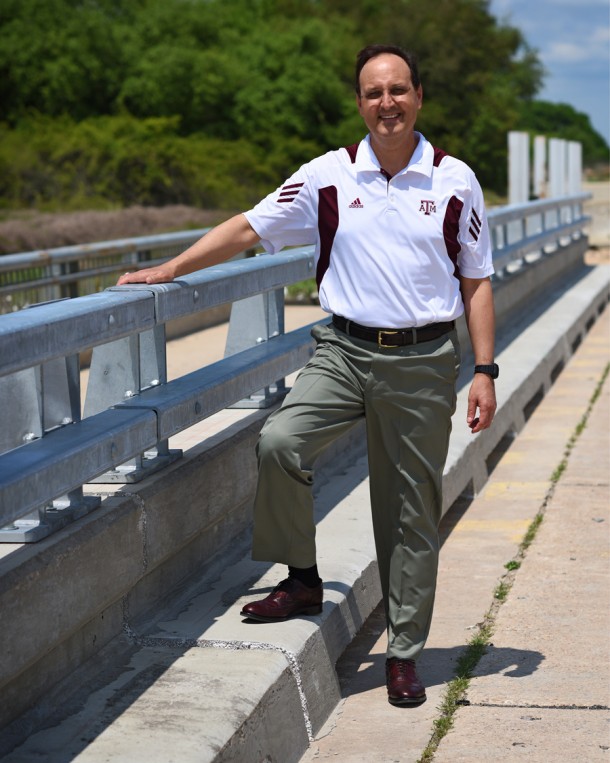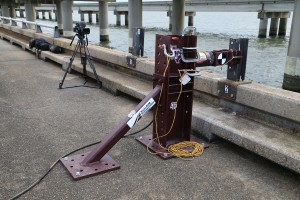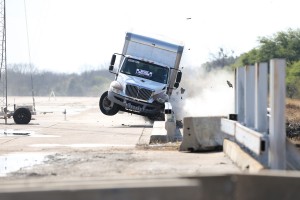
After decades of vehicles going overboard and into Lake Pontchartrain, a decision is expected soon on whether one of two Texas A&M Transportation Institute (TTI) rail designs will be selected to replace the current, low-profile railings on the famous causeway bridge.
TTI Associate Research Engineer William Williams presented details of his rail designs to the Greater New Orleans Expressway Commission in its monthly meeting, June 24.
At 24 miles in length, the causeway, built nearly 60 years ago, is the world’s longest continuous bridge over water. The low-profile railings on the causeway’s southbound lanes were designed for the nation’s vehicle fleet at that time, not the heavier, taller and higher center-of-gravity SUVs and pickup trucks so common today. Thirteen vehicles have breached the railing in the last 20 years, resulting in 11 fatalities.
“The commission could decide to replace not only the southbound railings, but the northbound railings, too,” says Carlton Dufrechou, general manager of the causeway bridge. The northbound span was built 13 years after the original bridge, with safer, six-inch higher railings. “Either way, it’s clear something has to be done. We have 20th-century bridge railings operating in a 21st- century driving environment.”
Dufrechou points out that, structurally, the bridge itself is fine; however, the rate of vehicles jumping the railing has increased in recent years. In fact, three have occurred in each of the last two years.
“I got involved in this rail retrofit project in the fall of 2013,” says Williams. “The causeway commission contacted me following another rail retrofit job I completed on a bridge damaged by Hurricane Katrina. However, retrofitting the causeway would be a major undertaking, bringing nearly 100 miles of guardrail up to current safety standards.”

According to Williams, the new railings were designed to maximize the strength of the existing bridge by distributing the higher impact forces of a crash over a larger area, but still meet the current MASH TL-4 crash standards. Additionally, an 18-inch-wide curb at the base of the rail had to be preserved. It’s the only location stranded motorists can stand, given the causeway’s narrow width. There are 300 breakdowns on the bridge each month, so ensuring safety for motorists experiencing car trouble is essential.
Williams conducted stress tests on the current causeway railings and developed 10 different new rail designs for consideration. Those ten were eventually narrowed down to two, which have both been crash tested at the TTI Proving Ground. (View video of crash tests)
In his presentation to commissioners, Williams described both options and revealed results of the crash tests. “I emphasized that the rail retrofit designs will not look like an afterthought. They look good, and they will save lives.”

Williams proposes a double-rail system for the southbound bridge that raises the current height of 25 inches to 46 inches. He suggests a single-rail system for the northbound bridge which would raise its profile to 45 inches.
About 40,000 vehicles travel the causeway each day, costing motorists about $3 in tolls.
“The causeway is the lowest cost toll facility in the nation. The commission is seeking federal grants and low-interest loans to help pay for this project — estimated at $100 million to include both north and south bound bridges—but increasing the toll is an option. Most people think this safety enhancement is worth it.”